Home>Articles>How To Make A Butler’s Pantry With Freestanding Cabinet
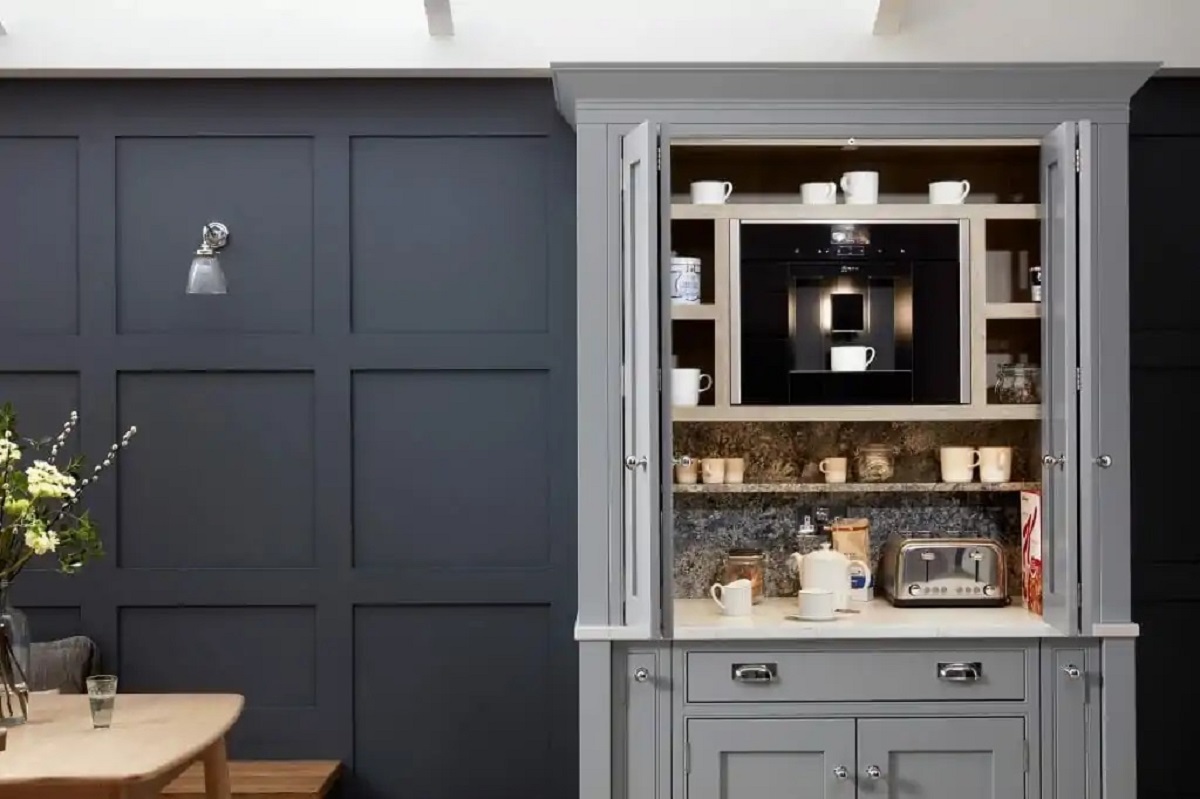

Articles
How To Make A Butler’s Pantry With Freestanding Cabinet
Modified: January 20, 2024
Learn how to create a stylish and functional butler's pantry using a freestanding cabinet. Explore our informative articles for expert tips and inspiration.
(Many of the links in this article redirect to a specific reviewed product. Your purchase of these products through affiliate links helps to generate commission for Storables.com, at no extra cost. Learn more)
Introduction
A butler’s pantry is a highly functional and stylish addition to any home. It is a dedicated space that serves as a secondary kitchen or storage area for all your pantry and entertaining needs. With a carefully chosen freestanding cabinet, you can create a beautiful and practical butler’s pantry that will not only enhance the functionality of your kitchen but also add a touch of elegance to your home.
In this article, we will guide you through the process of creating a butler’s pantry using a freestanding cabinet. We will cover everything from choosing the right cabinet and planning the layout to assembling the cabinet, organizing the space, and maintaining it.
Whether you have limited kitchen space or simply want to have a separate area for storage and preparation, a butler’s pantry can be the perfect solution. It allows you to keep your kitchen countertops clutter-free and provides additional storage for all your kitchen essentials.
Not only does a butler’s pantry provide extra storage, but it also serves as a functional workspace. You can use it to prepare drinks, set up food for entertaining guests, or even store small appliances that you don’t use regularly. By having a designated area for these tasks, you can keep your main kitchen area organized and free from unnecessary clutter.
Additionally, a butler’s pantry can be a design element that adds beauty and sophistication to your home. By carefully selecting a freestanding cabinet that complements your existing kitchen decor, you can create a seamless flow between the two spaces. It allows you to showcase your personal style and impress guests with a well-designed and organized butler’s pantry.
So, if you’re ready to create the perfect butler’s pantry with a freestanding cabinet, read on. We’ll provide you with step-by-step instructions and expert tips to help you transform your kitchen into a functional and stylish space.
Key Takeaways:
- Create a functional and stylish butler’s pantry by choosing the right freestanding cabinet, planning the layout, and determining functional requirements. Organize, decorate, and maintain the pantry for a seamless and efficient kitchen experience.
- Transform your kitchen with a well-designed and organized butler’s pantry. Select the perfect spot, prepare the area, assemble the cabinet, install shelves and accessories, and maintain cleanliness for a visually appealing and functional space.
Choosing the Right Freestanding Cabinet
When it comes to creating a butler’s pantry with a freestanding cabinet, choosing the right cabinet is crucial. It will not only determine the functionality of your pantry but also contribute to the overall aesthetic appeal of the space.
Here are some factors to consider when selecting the perfect freestanding cabinet for your butler’s pantry:
- Size: Measure the available space in your pantry area to determine the size of the cabinet you need. Consider both the width and height to ensure it fits comfortably within the allocated area.
- Style: Choose a freestanding cabinet that complements the design and style of your kitchen. Whether you prefer a modern, traditional, or rustic look, there are plenty of options available to suit your taste.
- Material: Select a cabinet made from high-quality materials that will withstand the demands of everyday use. Common options include wood, metal, and laminate. Consider the durability and maintenance requirements of each material before making your decision.
- Storage Capacity: Evaluate your storage needs and choose a cabinet with ample storage space. Look for features like shelves, drawers, and compartments that will help you keep your pantry items organized and easily accessible.
- Functionality: Consider the functionality of the cabinet. Does it have adjustable shelves? Are there built-in wine racks or hooks for hanging utensils? Think about your specific requirements and ensure that the cabinet can accommodate them.
- Budget: Set a budget for your butler’s pantry project and look for a freestanding cabinet that falls within your price range. Remember to consider the value and quality of the cabinet rather than simply opting for the cheapest option.
Once you have considered these factors, you can start browsing through various furniture stores, online retailers, and local markets to find the perfect freestanding cabinet for your butler’s pantry. Take your time to compare different options, read reviews, and seek recommendations from friends or interior design professionals if needed.
Choosing the right freestanding cabinet sets the foundation for your butler’s pantry. It ensures that you have the necessary storage space and functionality to make the most of this dedicated area in your home. So, take the time to find a cabinet that not only fulfills your practical needs but also reflects your personal style.
Planning the Layout
Once you have chosen the right freestanding cabinet for your butler’s pantry, the next step is to plan the layout. This step is crucial in ensuring that your pantry is organized, functional, and visually appealing.
Here are some key considerations when planning the layout of your butler’s pantry:
- Assessing the Space: Take measurements of your pantry area, including the dimensions of the cabinet, walls, and any existing appliances or fixtures. This will help you determine how the cabinet will fit into the space and allow you to plan the layout accordingly.
- Work Triangle: Consider the work triangle concept used in kitchen design, which refers to the efficient positioning of the sink, stove, and refrigerator. In your butler’s pantry, think about how you can incorporate this concept by placing frequently used items, such as the sink, prep area, and refrigerator, in close proximity.
- Flow and Accessibility: Design your pantry layout to promote smooth flow and easy accessibility. Place items that you use frequently within reach, while storing items that are used less often in the back or on higher shelves. Consider the natural flow of movement when arranging the storage areas and appliances.
- Zones and Functionality: Divide your pantry into functional zones based on your specific needs. For example, you might have a zone for food storage, a zone for beverages and glassware, and a zone for small appliances. This will help you organize items more efficiently and make it easier to find what you need.
- Lighting: Consider the lighting in your butler’s pantry. Ensure that the area is well-lit, either with natural light or artificial lighting, to make tasks easier and create an inviting atmosphere. Install lighting fixtures strategically to illuminate work areas and highlight specific features or decorations.
- Traffic Flow: Take into account the traffic flow around your butler’s pantry. Position the cabinet in a way that allows comfortable movement and prevents any obstruction or congestion in the kitchen area.
- Aesthetics: Finally, consider the overall aesthetics of your butler’s pantry. Incorporate your personal style and design preferences into the layout. Add decorative elements like artwork, plants, or a stylish backsplash to enhance the visual appeal of the space.
By carefully planning the layout of your butler’s pantry, you can maximize its efficiency and create a visually pleasing space. Take the time to measure, consider the flow, and arrange the different zones to meet your specific needs. A well-thought-out layout will make your butler’s pantry a joy to use and a standout feature in your home.
Determining Functional Requirements
When designing your butler’s pantry, it’s important to determine the functional requirements that will meet your specific needs. This step will ensure that your pantry is not only stylish but also practical and efficient.
Here are some key factors to consider when determining the functional requirements of your butler’s pantry:
- Storage Needs: Assess the types and quantities of items you plan to store in your pantry. Consider whether you need space for dry goods, canned food, spices, cookware, serving dishes, or small appliances. This will help determine the number of shelves, drawers, and compartments you need in your freestanding cabinet.
- Food Preparation: Decide if you want to include a food preparation area in your butler’s pantry. This could be a countertop space for chopping, mixing, or arranging items for entertaining. Consider if you need additional features like a sink, cutting board, or built-in outlets for appliances.
- Beverage Station: Determine if you want to include a beverage station in your butler’s pantry. This could include a small refrigerator or wine cooler, space for storing glassware and beverages, and a countertop for serving drinks. Consider if you want to incorporate features like a built-in wine rack or a wine glass holder.
- Appliance Storage: Assess if you would like to store small appliances in your butler’s pantry. This could include items like a toaster, blender, coffee maker, or stand mixer. Determine if you want to allocate specific shelves or drawers for these appliances, keeping them easily accessible while maintaining a clutter-free countertop in your main kitchen area.
- Additional Functions: Consider if there are any additional functions you would like your butler’s pantry to serve. This could include a space for storing and organizing cleaning supplies, a designated area for pet food and supplies, or even a desk for managing household paperwork.
- Accessibility: Take into account the accessibility of your pantry. Ensure that the shelves and drawers are at a height that is comfortable for you to reach. Consider whether you need pull-out shelves or lazy susans to easily access items in the back of the cabinet. Accessibility is essential in making your pantry user-friendly and efficient.
- Personal Preferences: Lastly, consider your personal preferences and lifestyle when determining the functional requirements of your butler’s pantry. If you frequently entertain guests, consider incorporating features like a built-in bar or additional serving space. If you have dietary restrictions, allocate space for storing specialized ingredients or cooking tools. Customize your pantry to suit your unique needs.
By carefully determining the functional requirements of your butler’s pantry, you can create a space that is tailored to your needs and enhances your daily routine. It will help you stay organized, simplify meal preparation, and add convenience to your kitchen activities. Take the time to envision how you will use the pantry and plan accordingly.
Selecting the Perfect Spot for Your Butler’s Pantry
Choosing the right location for your butler’s pantry is crucial in maximizing its functionality and convenience. Consider the following factors when selecting the spot for your pantry:
- Proximity to the Kitchen: Ideally, your butler’s pantry should be located near the main kitchen area for easy access. This allows for seamless flow between the two spaces and minimizes the distance for transferring items.
- Space Availability: Measure the available space in your home to determine where the pantry can be installed. Look for areas with enough square footage to accommodate the freestanding cabinet and allow for comfortable movement around it.
- Traffic Flow: Consider the traffic flow in your home when selecting the location. Avoid placing the pantry in areas with high foot traffic, as this may cause congestion and hinder the functionality of both the pantry and the surrounding areas.
- Adjacent Rooms: Consider the rooms adjacent to the potential pantry location. For example, placing the pantry near the dining room can facilitate seamless serving and cleaning during gatherings or dinner parties.
- Accessibility: Choose a spot that allows for easy accessibility to the pantry. Avoid cramped corners or areas that require navigating through obstacles. You should be able to open the cabinet doors and access items without any hindrance.
- Natural Light: If possible, select a spot that receives ample natural light. Natural light not only enhances the aesthetics of the pantry but also makes it a more inviting space. Consider windows or nearby sources of natural light when deciding on the location.
- Privacy: Depending on your preference, you may want to consider the level of privacy in the chosen spot. Some homeowners prefer a more concealed and private pantry, while others opt for a more open and accessible design. Take this into account when selecting the location.
- Structural Considerations: Assess the structural elements in the potential location. Ensure that the chosen spot can support the weight of the freestanding cabinet and any additional storage or countertop features you plan to incorporate.
- Plumbing and Electrical Accessibility: If you plan to include a sink, built-in appliances, or electrical outlets in your pantry, make sure there is easy access to plumbing and electrical connections. This will help streamline the installation process and avoid costly modifications.
- Aesthetics: Finally, consider the overall aesthetics of the chosen spot. Ensure that it blends seamlessly with the existing design and style of your home. Harmonizing the pantry with the surrounding areas will create a cohesive and visually pleasing space.
By carefully considering these factors, you can select the perfect spot for your butler’s pantry. This will ensure that the pantry enhances your daily routine, provides convenience, and seamlessly integrates with the overall flow and design of your home.
Read more: How To Make A Pull Out Pantry Cabinet
Preparing the Area
Before you can begin installing your freestanding cabinet and creating your butler’s pantry, it’s important to properly prepare the area. This will ensure a smooth and successful installation process. Here are some steps to consider when preparing the area:
- Clean and Clear the Space: Start by removing any furniture, appliances, or clutter from the area where the pantry will be installed. Clean the space thoroughly to create a fresh and blank canvas for your butler’s pantry.
- Inspect the Walls and Flooring: Examine the walls and flooring in the designated area. Make sure they are in good condition and free from any damage or cracks. If necessary, repair any issues before proceeding with the installation.
- Check the Electrical and Plumbing: If you plan to incorporate electrical outlets, lighting fixtures, or a sink in your butler’s pantry, check the existing electrical and plumbing connections in the area. Ensure that they are in good working condition and meet the necessary safety standards. If any modifications or upgrades are needed, consult a professional to ensure proper installation.
- Install Additional Lighting: Evaluate the lighting in the area and determine if any additional lighting is required. Good lighting is essential in a pantry, as it makes it easier to locate items and work efficiently. Install appropriate lighting fixtures, such as overhead lights or under-cabinet lighting, to ensure proper illumination in your butler’s pantry.
- Consider Ventilation: Adequate ventilation is important in a pantry, as it helps to prevent moisture buildup and maintain a fresh environment. If your chosen spot for the butler’s pantry lacks proper ventilation, consider installing a vent or exhaust fan to ensure proper air circulation.
- Paint or Wallpaper: If desired, you can freshen up the walls in the area by applying a fresh coat of paint or adding wallpaper. Choose colors or patterns that complement the overall design and style of your kitchen and butler’s pantry. Make sure to allow enough time for the paint or wallpaper to dry completely before proceeding with the installation.
- Protect the Flooring: Lay down protective sheets or coverings on the flooring in the area where you will be working. This will prevent any damage or staining during the installation process.
- Ensure Adequate Power Supply: If you are installing electrical outlets or planning to use power tools during the installation, make sure you have access to an adequate power supply. This may require using extension cords or temporarily relocating nearby appliances to provide sufficient power.
- Take Safety Precautions: Finally, always prioritize safety during the preparation process. Use appropriate safety equipment, such as gloves and goggles, when necessary. If you are unsure about any aspects of the preparation or installation, consult a professional to help guide you through the process.
By properly preparing the area for your butler’s pantry, you will create a clean and functional space where you can install your freestanding cabinet with ease. Take the time to attend to these important preparations to ensure a successful and enjoyable pantry installation experience.
When creating a butler’s pantry with a freestanding cabinet, consider adding adjustable shelves to accommodate different sized items and maximize storage space.
Assembling the Freestanding Cabinet
Assembling the freestanding cabinet for your butler’s pantry is an important step in bringing your pantry design to life. Proper assembly ensures that the cabinet is sturdy, functional, and ready to be filled with all your kitchen essentials. Follow these steps to assemble your freestanding cabinet:
- Read the Instructions: Begin by carefully reading the manufacturer’s instructions that come with the cabinet. Familiarize yourself with the assembly process and ensure you have all the necessary tools and hardware.
- Organize the Parts: Lay out all the parts and hardware in a well-organized manner. Make sure you have a clear workspace and keep small components, like screws or brackets, in a container to prevent them from getting lost.
- Follow the Step-by-Step Guide: Follow the provided step-by-step instructions for assembling the cabinet. Start from the base and work your way up, attaching panels, shelves, and other components as instructed. Pay close attention to any specific instructions regarding hardware placement or adjustments.
- Secure Connections: Ensure that all connections, such as screws and bolts, are properly tightened and secure. Use the provided tools or a suitable screwdriver or wrench to tighten hardware. Check for any loose or uneven connections and make adjustments as necessary.
- Double-Check Alignment: As you progress with the assembly, double-check that all components are aligned correctly. Pay attention to the cabinet’s overall stability and levelness. Use a level to ensure the cabinet is straight and adjust the feet or legs if needed.
- Confirm Doors and Drawers Functionality: Test the functionality of any doors or drawers included in the cabinet. Make sure they open and close smoothly and align properly. Adjust any hinges or drawer slides to ensure proper operation.
- Secure the Cabinet to the Wall: If recommended by the manufacturer, consider securing the freestanding cabinet to the wall for additional stability. Use wall anchors or brackets to securely attach the cabinet to the wall, following the provided instructions.
- Clean Up: Once the cabinet is assembled and secured, clean up any debris or packaging materials from the assembly process. Wipe down the surfaces of the cabinet to remove any dust or fingerprints.
- Double-Check the Stability: Before placing items in the cabinet, give it a final check for stability. Make sure it is steady and level on the floor, and that all components are securely fastened. This will ensure the safety and longevity of your butler’s pantry cabinet.
By following these steps, you can confidently assemble your freestanding cabinet and prepare it for use in your butler’s pantry. Take your time, follow the instructions carefully, and make any necessary adjustments to ensure a high-quality and functional end result.
Installing Shelves and Accessories
Installing shelves and accessories in your freestanding cabinet is an important step in maximizing the storage and functionality of your butler’s pantry. Here are some guidelines to follow when installing shelves and accessories:
- Measure and Plan: Before installing shelves, measure the interior space of your cabinet. Determine the desired height and spacing for the shelves based on the items you plan to store. Create a plan to ensure efficient use of space and easy access to your pantry items.
- Adjustable Shelves: If your cabinet comes with adjustable shelves, take advantage of this feature. Adjust the shelves according to your storage needs, allowing for different heights for various items.
- Install Shelf Supports: For adjustable shelves, install shelf supports according to the manufacturer’s instructions. Typically, these supports fit into pre-drilled holes in the cabinet sides. Make sure they are securely in place to provide stability for the shelves.
- Insert Shelves: Slide the shelves onto the supports or place them on the predetermined shelf height. Ensure they are level and aligned correctly within the cabinet. Double-check that each shelf is secure and can support the weight of the items you plan to store.
- Add Shelf Liners: Consider adding shelf liners to protect the shelves from scratches and spills. Liners can also help keep items stable and prevent them from slipping. Choose liners that are easy to clean and maintain.
- Install Door Organizers: If your freestanding cabinet has doors, take advantage of the interior surface by installing door organizers. These accessories can include racks, hooks, or baskets that provide additional storage space for items such as spices, utensils, or cleaning supplies.
- Mount Hooks or Racks: Use hooks or racks to hang items like mugs, aprons, or towels on the interior sides or doors of your cabinet. These simple additions help keep items easily accessible and can make the most of vertical storage space.
- Consider Drawer Inserts: If your cabinet has drawers, consider installing drawer inserts or dividers to keep items organized and prevent them from shifting. These inserts help maximize drawer space and keep utensils, tools, or smaller items neatly separated.
- Add Lighting: Consider installing LED strip lights or puck lights inside your cabinet to enhance visibility and make it easier to locate items. Ensure the lighting fixtures are securely attached and provide adequate illumination for the entire cabinet space.
- Label and Arrange Items: Once all shelves and accessories are installed, label and arrange your pantry items in a way that makes sense to you. Categorize items based on their use or frequency of use. Utilize baskets or plastic containers to further organize and group like-items together.
By following these installation guidelines, you can maximize the storage capacity and functionality of your butler’s pantry freestanding cabinet. Take the time to plan, measure, and install shelves and accessories to create an organized and efficient pantry space.
Organizing Your Butler’s Pantry
Organizing your butler’s pantry is essential to make the most of the available space and ensure easy access to all your pantry items. Here are some tips to help you organize your pantry effectively:
- Categorize Items: Group similar items together based on their use and category. This could include separating dry goods, canned goods, snacks, spices, baking supplies, and cleaning products. Creating categories makes it easier to find what you need and maintain a well-organized pantry.
- Utilize Storage Containers: Utilize clear plastic or glass storage containers to store items like pasta, grains, cereals, and snacks. Not only do these containers keep your pantry aesthetically pleasing, but they also help keep items fresh and prevent pests from getting into your food.
- Labeling: Label your containers, shelves, and areas within your pantry to help you quickly identify where items are stored. Use a label maker or chalkboard labels for a clean and professional look. This will save you time when searching for specific ingredients or items in your pantry.
- Maximize Vertical Space: Utilize the vertical space inside your pantry by installing additional shelves or adjustable racks. Take advantage of the height of your cabinet to create extra storage for items like baking sheets, cutting boards, or serving trays.
- Arrange Based on Accessibility: Consider which items you use most frequently and place them at eye level or within easy reach. Items used less often can be stored on higher or lower shelves. Keep frequently used appliances or utensils in easily accessible areas for convenient use.
- Group Similar Items: Keep similar items together to create a cohesive and organized pantry. For example, group all baking supplies in one section and all canned goods in another. This makes it easier to locate specific items and prevents duplication of purchases.
- Organize by Expiration Date: Regularly check the expiration dates of your pantry items and organize them accordingly. Place items with the closest expiration dates at the front for easy visibility and use. This practice helps avoid waste and ensures the freshness and quality of your ingredients.
- Create Zones: Create zones within your pantry for different categories of items. For example, designate one section for snacks, another for beverages, and another for spices and seasonings. This allows for efficient organization and helps maintain order within your pantry.
- Consider Accessibility for Children: If your children will be accessing the pantry, create an area for their snacks and lunch items at a height they can reach easily. Use clear containers or baskets to make it visually appealing and help children identify their options independently.
- Maintain Regular Maintenance: Regularly clean and declutter your pantry to maintain its organization. Discard expired items, wipe down shelves, and reevaluate the layout based on your changing needs. This will ensure that your pantry remains functional and clutter-free.
By following these tips, you can create a well-organized butler’s pantry that maximizes space, makes it easy to find items, and enhances your overall kitchen efficiency. Take the time to assess your needs, categorize your items, and maintain the organization of your pantry for a stress-free cooking and meal preparation experience.
Decorating and Styling Tips
When it comes to decorating and styling your butler’s pantry, you have the opportunity to add personal touches that enhance the visual appeal of the space. These tips will help you create a stylish and inviting pantry:
- Choose a Color Scheme: Select a color scheme that complements the overall design and style of your kitchen. Consider coordinating the colors of your pantry accessories, such as storage containers or decorative items, with the rest of your kitchen decor. This will create a cohesive and harmonious look.
- Add Texture and Patterns: Incorporate texture and patterns to add visual interest to your pantry. Consider using patterned wallpaper, textured backsplash tiles, or decorative baskets. These elements can bring depth and dimension to the space.
- Display Cookbooks or Recipe Cards: Spruce up the shelves of your butler’s pantry by displaying cookbooks or recipe cards. This not only adds a decorative element but also provides quick access to your favorite recipes.
- Add Greenery: Bring life to your pantry by placing small potted plants or fresh herbs on the shelves. They will add a touch of freshness and natural beauty to the space. Just make sure the plants receive adequate light and are well-suited for the pantry environment.
- Hang Artwork or Chalkboard: Install a small corkboard or chalkboard on the inside of the pantry door for pinning recipes, grocery lists, or inspirational quotes. You can also hang small artwork or framed pictures to add a personal and artistic touch.
- Use Decorative Storage Containers: Opt for decorative storage containers that not only serve a functional purpose but also contribute to the overall aesthetic of your pantry. Consider using glass jars, woven baskets, or stylish canisters to store pantry staples, snacks, or spices.
- Spruce Up the Lighting: Upgrade the lighting fixtures in your butler’s pantry to create a warm and inviting ambiance. Install pendant lights or decorative chandeliers that complement the overall style of the pantry. Adjustable lighting can also help highlight specific areas or items in the pantry.
- Showcase Special Collections: Display any special collections or unique kitchen items in your pantry. Whether it’s vintage dishware, antique utensils, or a collection of colorful spices, showcasing these items adds personality and charm to the space.
- Add a Mirror: If your butler’s pantry is small or lacks natural light, consider hanging a mirror on one of the walls. Mirrors create the illusion of space and reflect light to make the pantry appear brighter and more open.
- Keep it Tidy: Above all, maintain a clean and organized pantry. A clutter-free space allows your style choices and decorative touches to shine. Regularly declutter, clean, and rearrange items to maintain an aesthetically pleasing pantry.
By incorporating these decorating and styling tips, you can transform your butler’s pantry into a visually pleasing and personalized space. Let your creativity shine while keeping functionality and organization in mind, and make your pantry a standout feature in your kitchen.
Maintaining and Cleaning Your Butler’s Pantry
Maintaining a clean and organized butler’s pantry not only helps you stay on top of your kitchen inventory but also ensures a pleasant and efficient cooking experience. Follow these tips to keep your pantry in top shape:
- Regular Decluttering: Set aside time every few months to declutter your pantry. Remove any expired items, consolidate duplicates, and donate any non-perishable items that you no longer need. This will help maximize space and keep your pantry organized.
- Wipe Down Shelves and Surfaces: Regularly wipe down the shelves, interior surfaces, and doors of your pantry to remove any dust, spills, or debris. Use a mild cleaning solution and a soft cloth to avoid damaging the cabinet or its contents.
- Clean Containers and Jars: Take the time to clean the storage containers, jars, and canisters inside your pantry. Wash them with warm, soapy water and dry them thoroughly before refilling. This helps maintain freshness and prevents cross-contamination.
- Rotate Stock: Pay attention to the expiration dates and storage guidelines of your pantry items. Rotate stock by moving older items to the front and placing new items towards the back. This ensures that you use items before they expire and helps prevent food waste.
- Label and Organize: Continuously organize your pantry by keeping similar items together and utilizing labels. Regularly check and update labels to avoid any confusion or misplaced items. This practice helps you quickly locate what you need and maintain an organized pantry.
- Keep a Cleaning Schedule: Create a cleaning schedule to ensure regular maintenance of your butler’s pantry. Set aside specific days or times for tasks like wiping down surfaces, cleaning glass jars, dusting shelves, and organizing items. Consistency is key to keeping your pantry in top shape.
- Inspect for Pests: Regularly check for signs of pests, such as insects or rodents, in your pantry. Look for droppings, gnawed packages, or any entry points. If you notice any infestation, take immediate action to eliminate the pests and prevent further contamination.
- Monitor Humidity and Temperature: Keep an eye on the humidity and temperature inside your butler’s pantry. Excessive humidity can lead to mold, mildew, or spoilage of certain pantry items. Maintain a dry and cool environment to ensure the longevity of your ingredients.
- Deep Clean Periodically: Set aside time for a deep cleaning of your pantry on a quarterly or semi-annual basis. Remove all items from the shelves, clean the interior thoroughly, and sanitize the shelves and containers. This helps maintain a fresh and hygienic pantry environment.
- Check for Leaks or Water Damage: Regularly inspect your butler’s pantry for any signs of leaks or water damage. Check the plumbing connections, sink area, and nearby walls for any issues. Address any leaks or damage immediately to prevent further issues.
By following these maintenance and cleaning tips, you can keep your butler’s pantry organized, clean, and functional. Regular upkeep and attention to detail will ensure that your pantry remains a valuable asset in your kitchen and contributes to a pleasant cooking and meal preparation experience.
Conclusion
Creating a butler’s pantry with a freestanding cabinet can transform your kitchen and enhance your home’s functionality and style. By carefully choosing the right cabinet, planning the layout, and determining your functional requirements, you can create a dedicated space for storage, meal preparation, and entertaining.
Throughout this article, we have provided comprehensive guidance on how to make your butler’s pantry a functional and aesthetically pleasing addition to your home. From selecting the perfect freestanding cabinet to organizing your pantry and maintaining its cleanliness, each step plays a crucial role in maximizing the potential of your pantry space.
Remember, the key to a successful butler’s pantry is striking a balance between functionality and style. Consider your storage needs, access requirements, and personal preferences when selecting the cabinet and designing the layout. Pay attention to details such as lighting, ventilation, and traffic flow to create a space that seamlessly integrates with your kitchen and enhances your everyday routine.
Once your pantry is complete, take the time to organize and decorate it. Group similar items, utilize storage containers, and add decorative accents to reflect your personal style. Regularly maintain and clean your pantry to ensure its longevity and efficiency, from decluttering and wiping surfaces to monitoring for pests and expired items.
A well-designed and organized butler’s pantry will not only provide convenience and efficiency in your daily kitchen tasks but also add value and sophistication to your home. It serves as a functional workspace, storage area, and design feature that enhances the overall appeal of your kitchen.
With the knowledge and tips provided in this article, you are well-equipped to create a butler’s pantry that meets your needs and reflects your personal style. So, get started on your pantry project and enjoy the benefits of a well-planned and stylish space that enhances your cooking experience and brings joy to your home.
Frequently Asked Questions about How To Make A Butler's Pantry With Freestanding Cabinet
Was this page helpful?
At Storables.com, we guarantee accurate and reliable information. Our content, validated by Expert Board Contributors, is crafted following stringent Editorial Policies. We're committed to providing you with well-researched, expert-backed insights for all your informational needs.
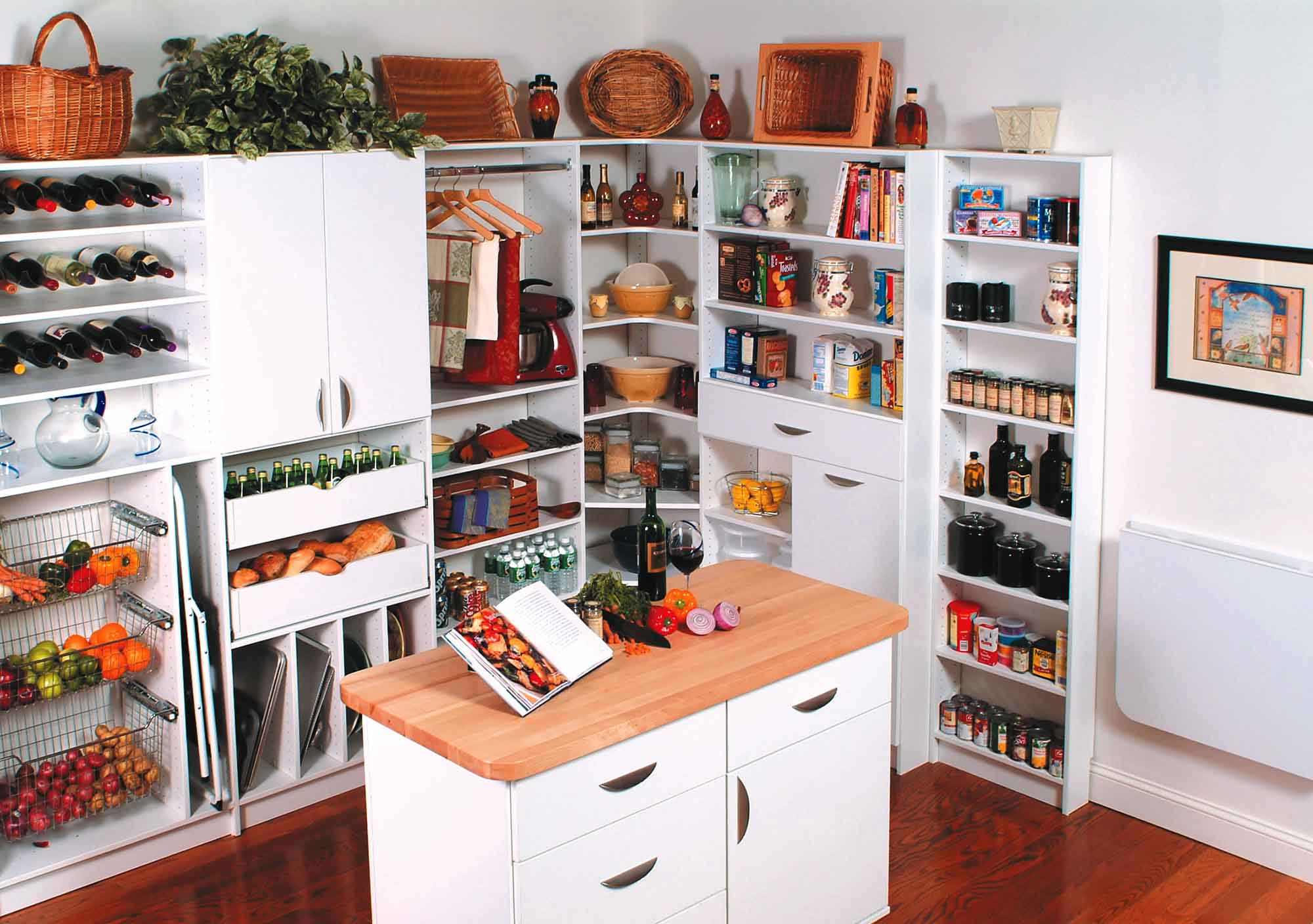
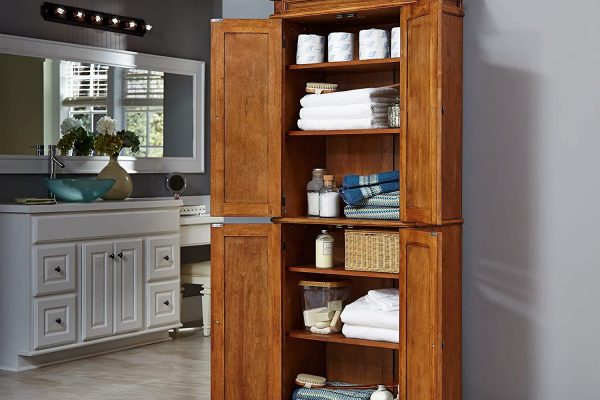
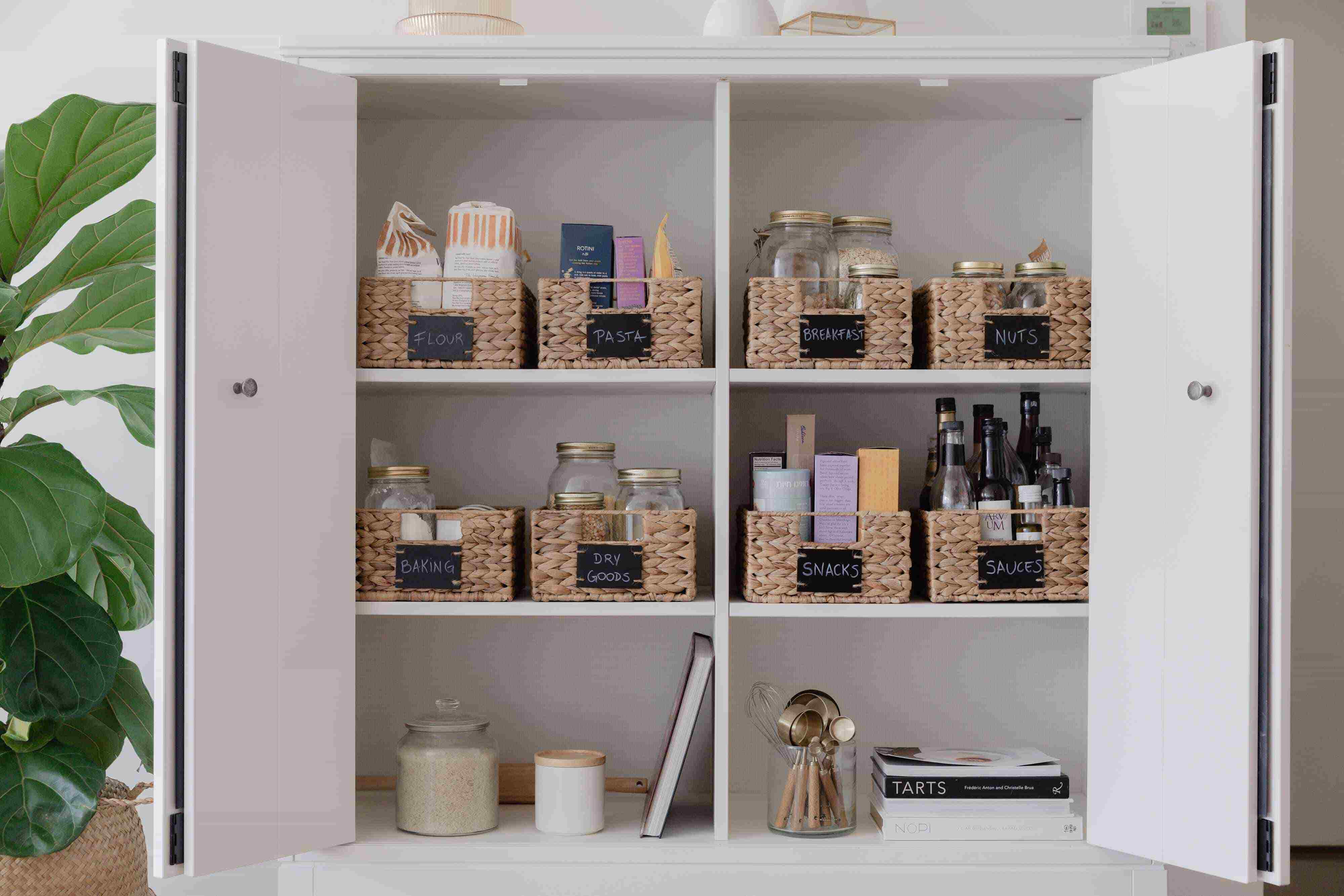
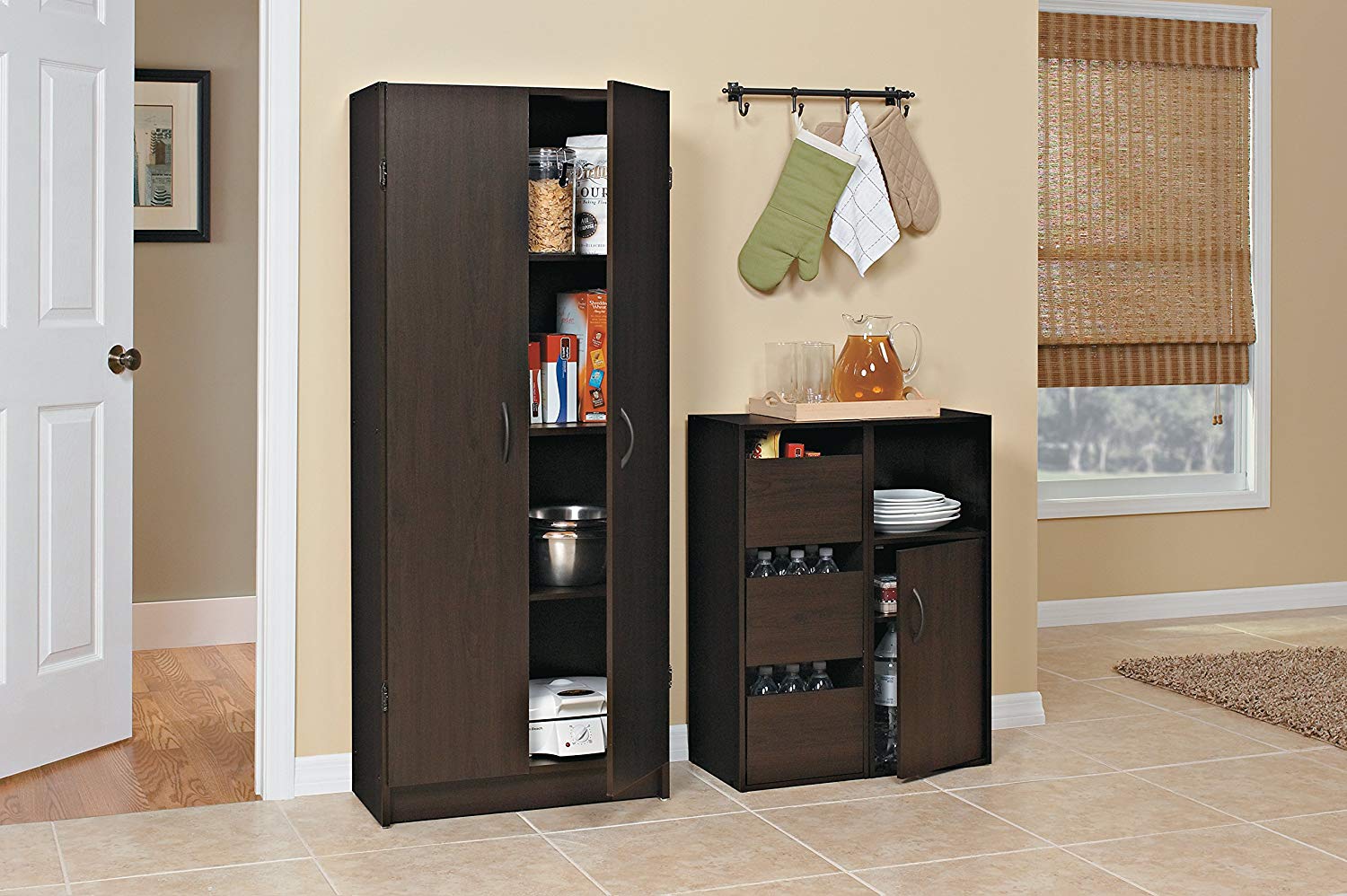
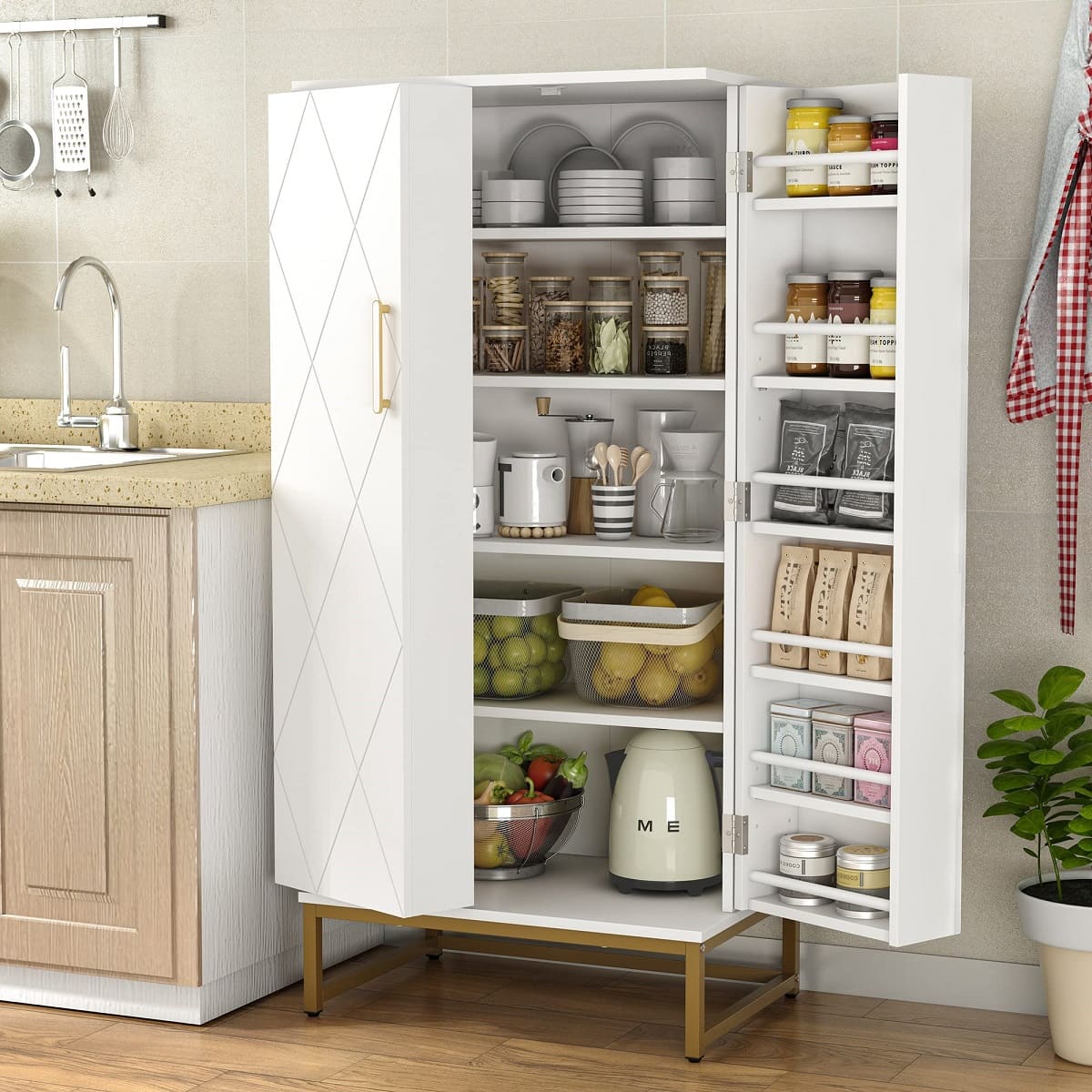
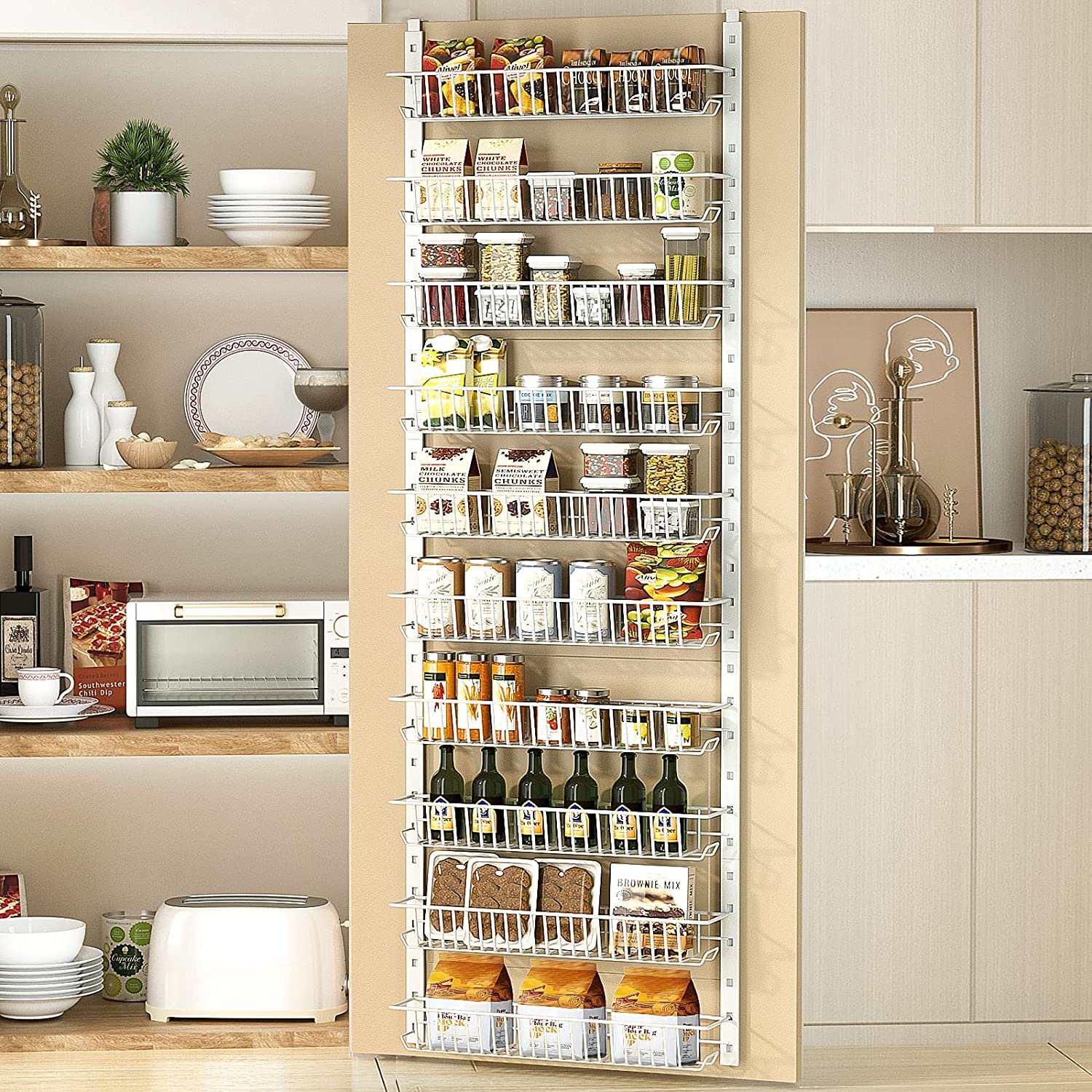
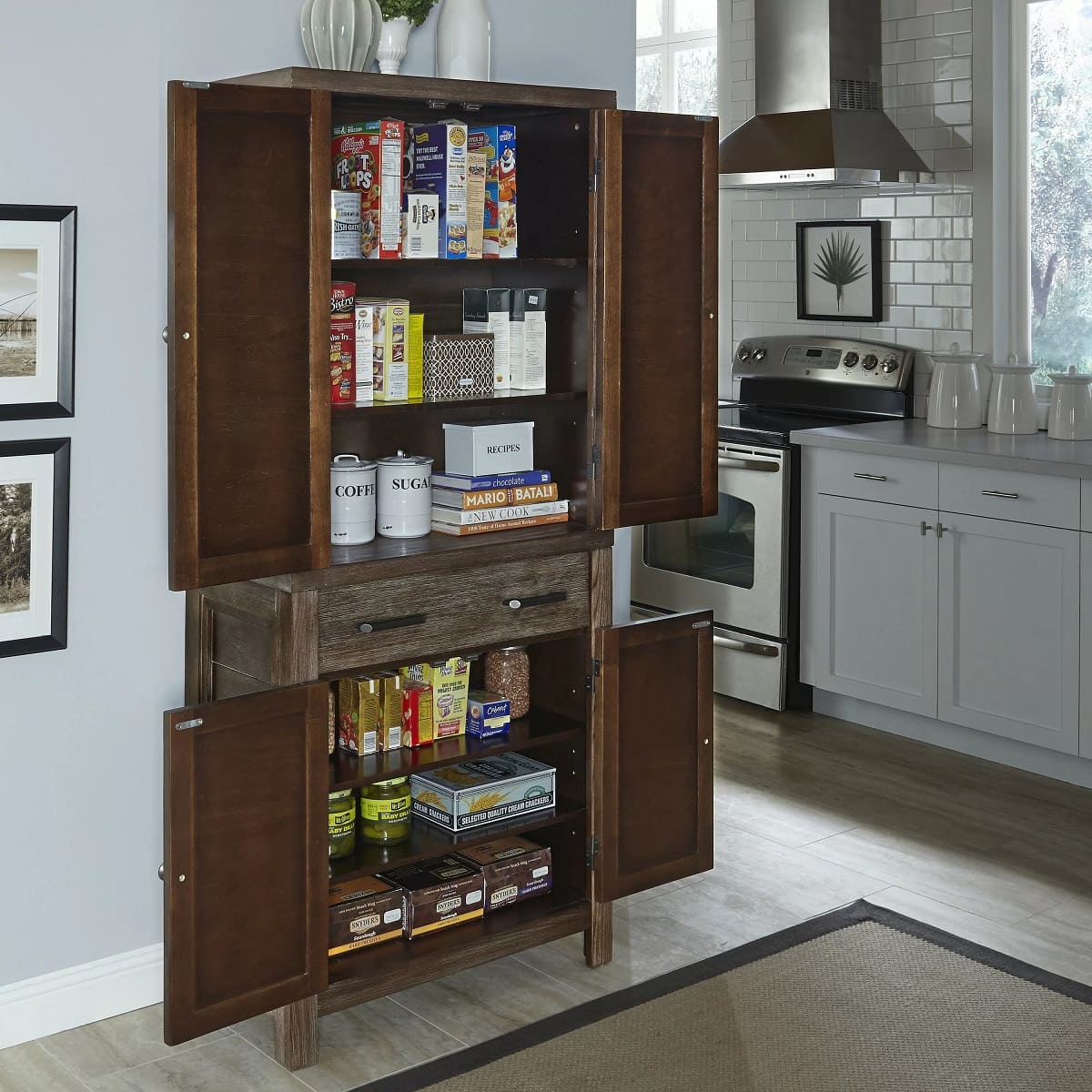
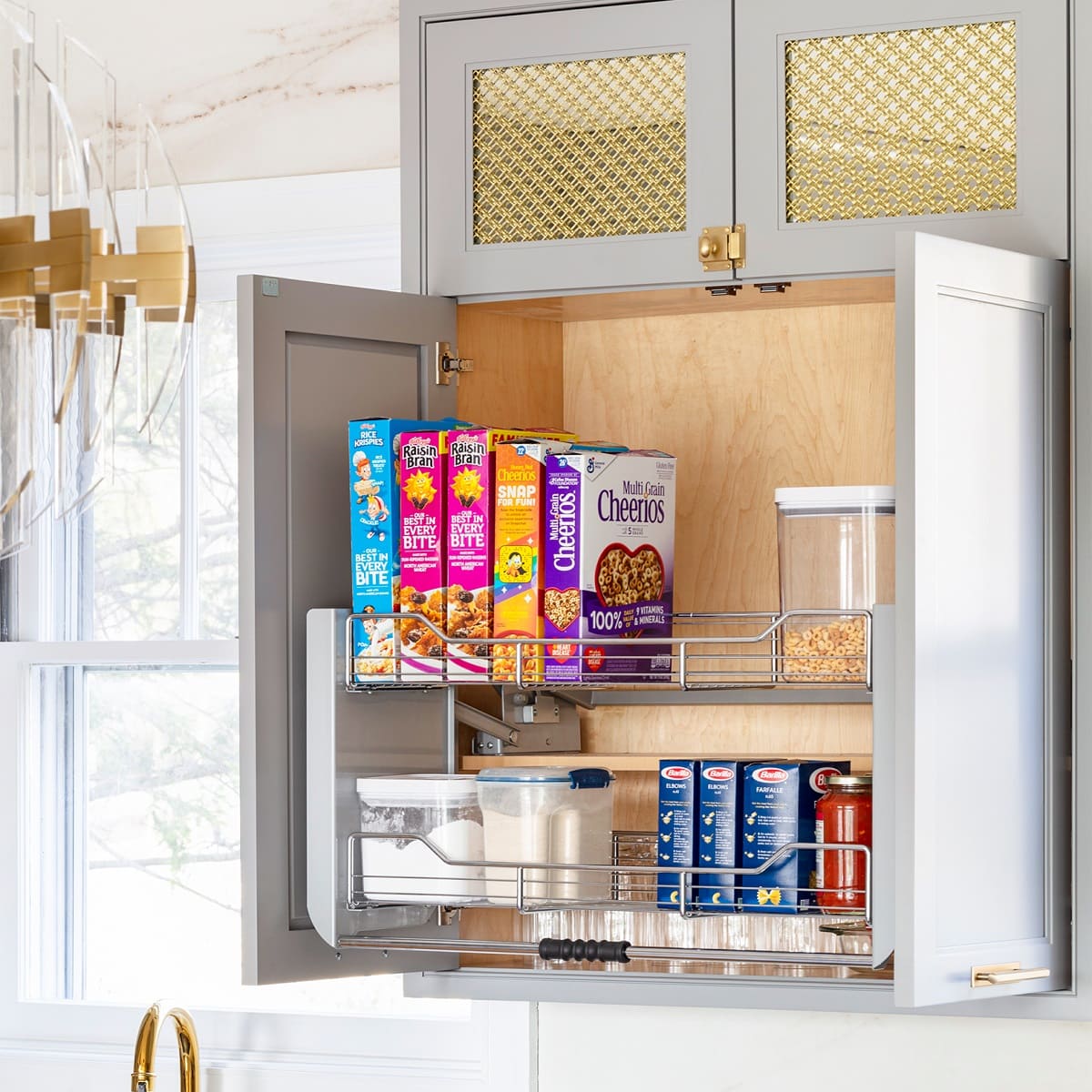
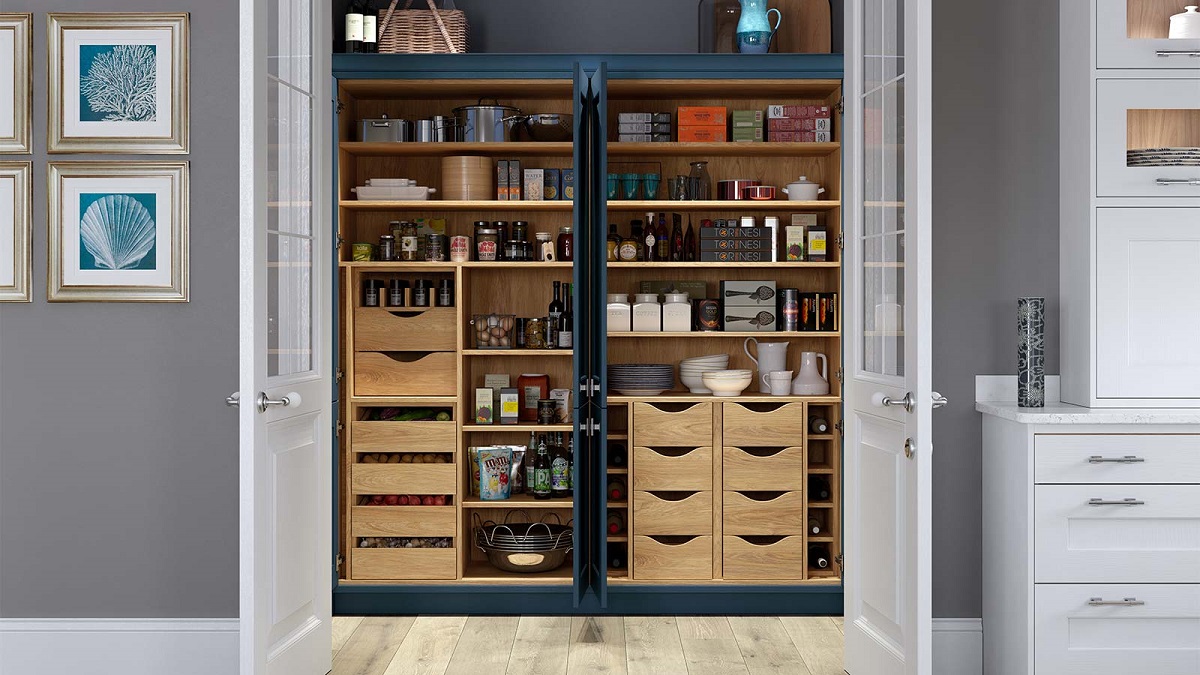
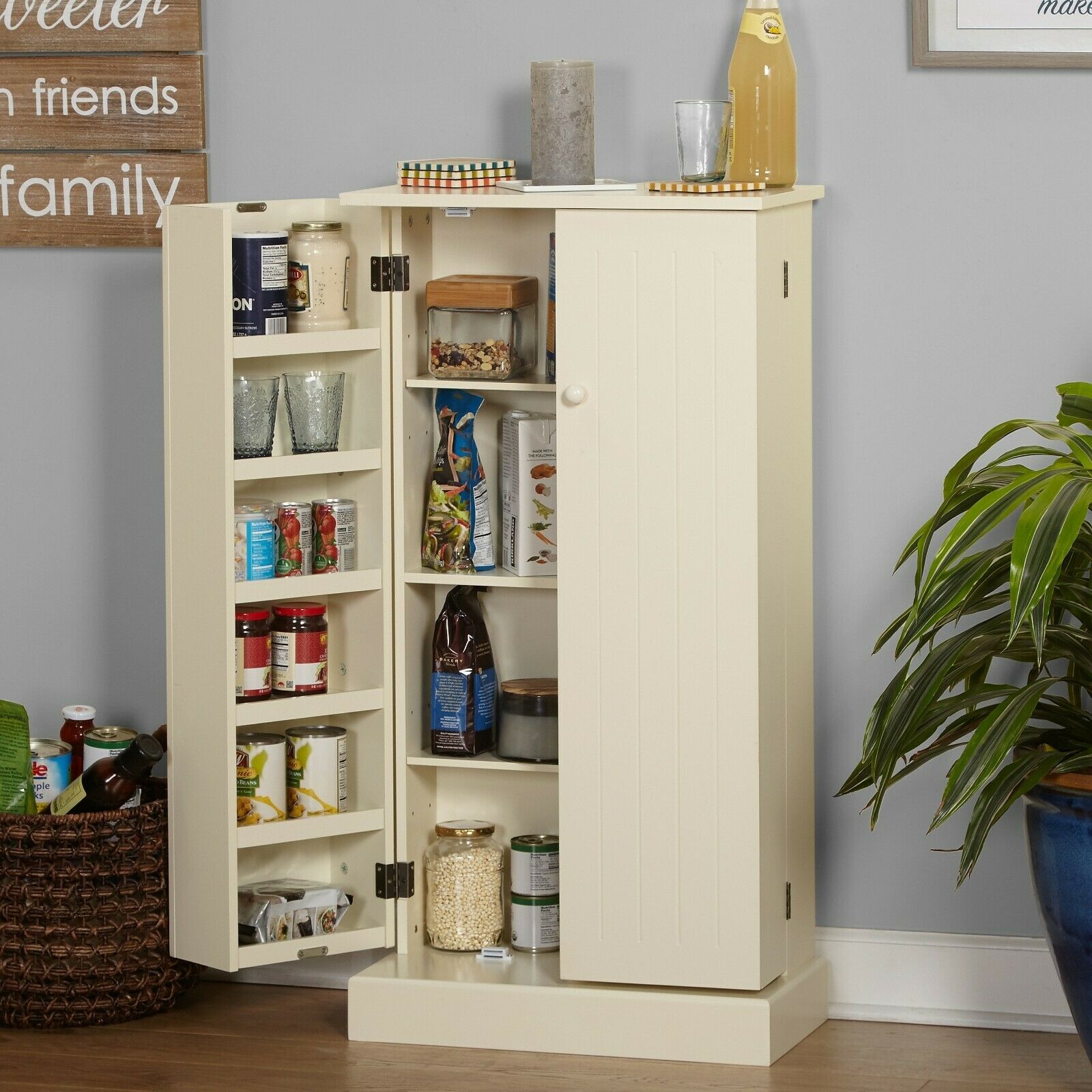
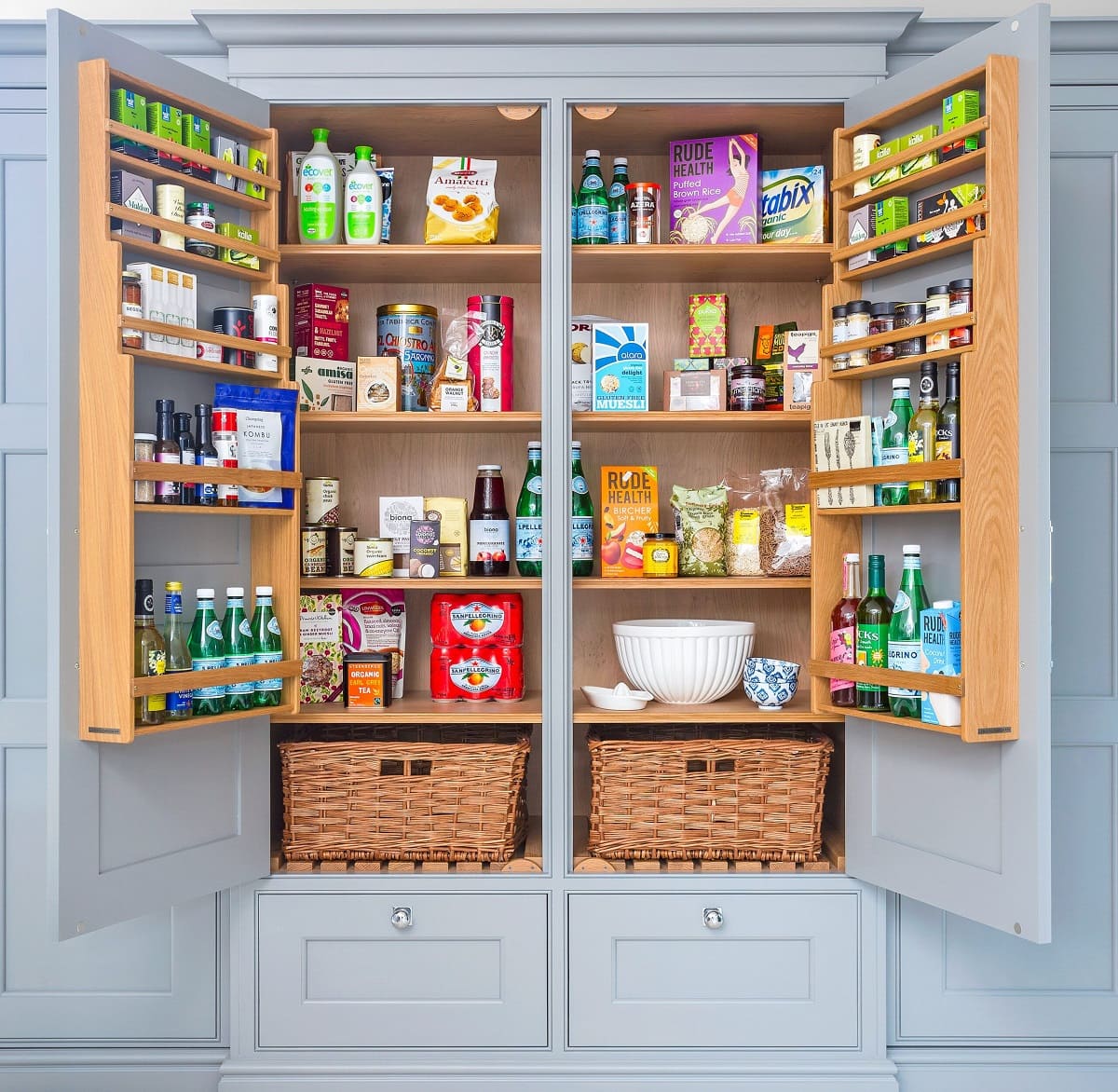
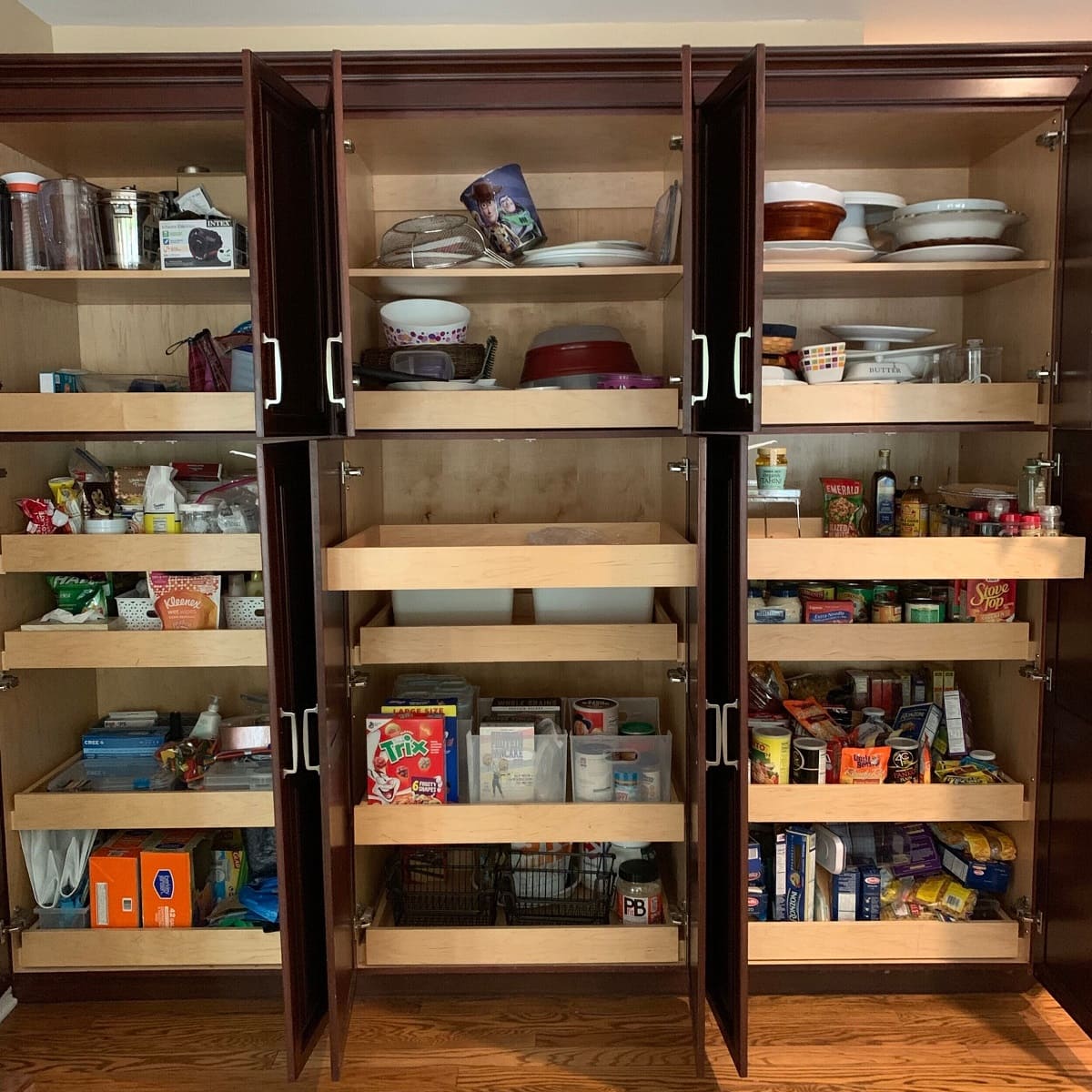
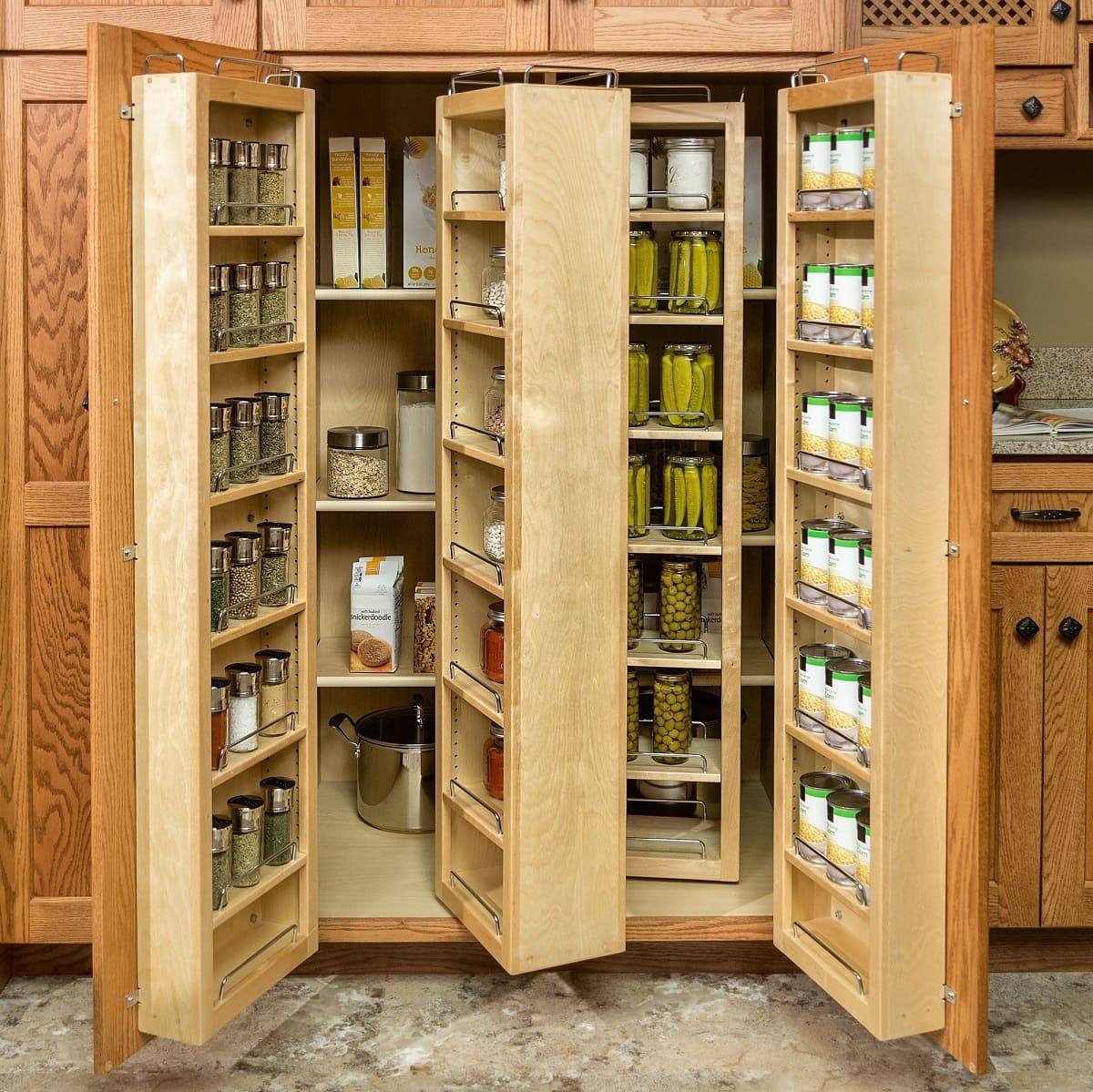

0 thoughts on “How To Make A Butler’s Pantry With Freestanding Cabinet”